Production Year 2017
Reviving the Lost Folk Songs of Japan
DC281763![]()
ニッポンのうた~“歌う旅人”松田美緒とたどる日本の記憶~
![]()
![]()
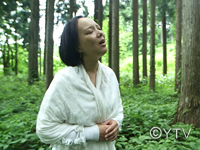
|Length : 47 |Year : 2017 |
Mio Matsuda is a “traveling singer” who has spent five years on a project reviving precious Japanese folk songs on the verge of obscurity. By visiting the landscapes that nurtured the songs, she aims to convey the regional lifestyles and sentiments of old-day Japan in her performances. A key resource for her is a folk art research center in Akita with archived recordings of 70,000 folk songs. In the program she introduces several such songs including “Yamago-uta”, sung by hunters in Akita in reverence of the mountains, and “Tokohai-bushi”, sung by seamen navigating the Seto Inland Sea. Her quest also takes her to Palau, where residents still sing a Japanese song titled “Lemongrass”. Written in Micronesia during the time of Japanese administration, the song expresses a sad romance between a Japanese man and a Micronesian woman, and as such it is a valuable testament to the sentiments of that time.
The High School Aquarium that Brought a Town Back to Life
DC281764![]()
高校生水族館 竜宮城があった町 [RNB]
![]()
![]()
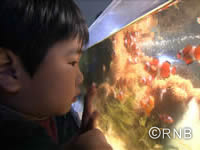
|Length : 25 |Year : 2017 |
The town of Nagahama was once home to the first aquarium in all of Shikoku, one of Japan’s four main islands. Now it is home to an aquarium run entirely by high school students. The public high school’s small aquarium opens up for public viewing once a month. With roughly 2000 aquatic animals from both the sea and rivers, the public openings always draw a big and lively crowd. The animals are cared for by the aquarium club, a rare club for Japanese schools. As the club members care for the animals, they learn many new things, and in 2015, the club placed fourth in the world’s largest student science contest. Hearing this news brought back old memories and brought a new life to the townspeople, who began holding events and collecting signatures to revive the original aquarium. The town was transformed by the young high school students and set out to revive the original aquarium.
A Record of Life in Minamata
DC281765![]()
命の記録~写真家・桑原史成の水俣~ [RKK]
![]()
![]()
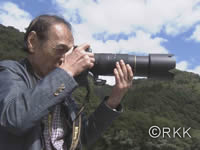
|Length : 24 |Year : 2017 |
Shisei Kuwabara, a photographer in Tokyo, organized a group photoshoot in the city of Minamata in 2016. The subjects of this shoot are Minamata disease patients and their families, around 40 in all. Mr. Kuwabara has photographed them continuously for the past fifty years and beyond.
Minamata disease is a central nervous system disorder caused by methylmercury poisoning via seafood contaminated by factory wastewater. Its victims were families of fishermen: the adults, their children, even their unborn children. In 2016, some of these fetal Minamata disease patients turned 60 alongside the 60th anniversary of the official recognition of Minamata disease. Some of the patients and families Mr. Kuwabara knew had passed away, or were bedridden.
Mr. Kuwabara wished to express 60 years of the Minamata incident in a photograph. To this end, he prepared past photographs of the patients and their families. Held by the group photo participants, each image harkens back to the effects of the incident and the emotions of its victims.
For the 80-year-old Mr. Kuwabara, this may be his final “shutter chance” in Minamata. How will he frame his subjects with their complex, often bitter circumstances? The present reality of Minamata comes to light through Mr. Kuwabara’s interactions with surviving victims and in his photograph.
SPIRIT OF JAPAN A Local Product~Loved by the World~
DC291736![]()
日本のチカラ 白い鉱物で“美”を発信!~奥三河産セリサイトの魅力~ [NBN]
![]()
![]()
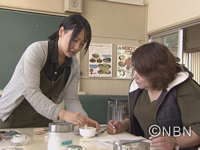
|Length : 24 |Year : 2017 |
SPRIT OF JAPAN is a program produced by the Minkyokyo (Commercial Broadcasting Education Association) featuring documentaries about craftsmanship, life-enriching activities and community revitalization.
All over Japan one can find compelling examples of chikara, or strength, in the technique of master artisans, local industries, and the wisdom, history and culture of local people.
In this episode we will visit the town of Toei, located in the eastern part of Aichi Prefecture. This small town has a population of 3,400 people.
We will learn about a project bringing hope to this community as it faces a shrinking and aging population. A white powder, previously unknown even to many locals, is central to this project.
This white powder is called sericite, and it is a raw material used in foundation used by both Japanese and major global cosmetics companies alike. The Japanese for the mineral sericite is kinu unmo, which translates to “silk mica”.
Sericite is also mined outside of Japan in places such as Malaysia and China, but Toei is the only place where it is mined in Japan.
Sanshin Mining is the company that produces Sericite here. In stark contrast with the glamorous scene that comes to mind when one thinks of cosmetics, the mine shaft is narrow and gloomy. Unable to use heavy machinery in this environment, craftsmen mine the sericite seven hours a day by hand using pickaxes. The sericite mined in Toei is known for its color being whiter than foreign-sourced competitors. Its color remains white, even after absorbing moisture from sweat, and that’s why companies from around the world covet it so much. The hard work of these craftsman is playing a hidden role in the beauty of women around the world.
Today we are meeting Ms. Chihiro Ooka. While enjoying her hobby of visiting famous festivals around the country, Chihiro was so attracted by the town and its traditional flower festival, Hana Matsuri, that she eventually moved here.
Now she has teamed up with Sanshin Mining President Junichi Misaki to use Toei’s world-renowned sericite to help revitalize the town. Setting her sights on female visitors, she is the driving force behind the town’s Make-Your-Own Foundation class that is triggering a burst of renewed interest in the town of Toei. Tourists are now coming from all over for the chance to experience making their own cosmetics. And now she will try promoting sericite and Toei for the first time in Tokyo! How will the customers react?
Toei is now confronted by a serious demographic challenge with its shrinking and aging population. Chihiro’s efforts are returning smiles to peoples’ faces in her community. She is a breath of fresh air, and may just change her town’s future with this ‘stone of beauty’, sericite.
SPIRIT OF JAPAN The Legacy and Beauty of Japanese Umbrella
DC291737![]()
日本のチカラ 地域を照らす和傘工房の挑戦 [OBS]
![]()
![]()
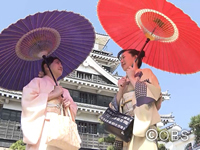
|Length : 29 |Year : 2017 |
The wagasa is a traditional Japanese paper umbrella, and a symbol of the castle town Nakatsu in Oita Prefecture. After 300 years of local production, it nearly went extinct as western-style umbrellas became commonplace, but Jiro Imayoshi, once a real estate agent in Tokyo, came back and gave them a fresh start.
Each wagasa is painstakingly produced by hand over around sixty steps, from building the frame to applying the paper, then sealing it with oil and sun-drying it for ten days. All in all, the artifacts take around two months to complete. However, few people would ever use a wagasa daily. That’s why Imayoshi has worked to combine ancient methods with modern, free-spirited design to produce innovative wagasa umbrellas that are fun to look at and fun to use.
Imayoshi’s team of volunteers at “Wagasa Workshop Shuka” now receive an overwhelming number of orders, having amassed popularity from throughout the country. With their products being warmly received overseas, the local area is being revitalized. Their success may hold the key to revitalizing local communities across Japan...














